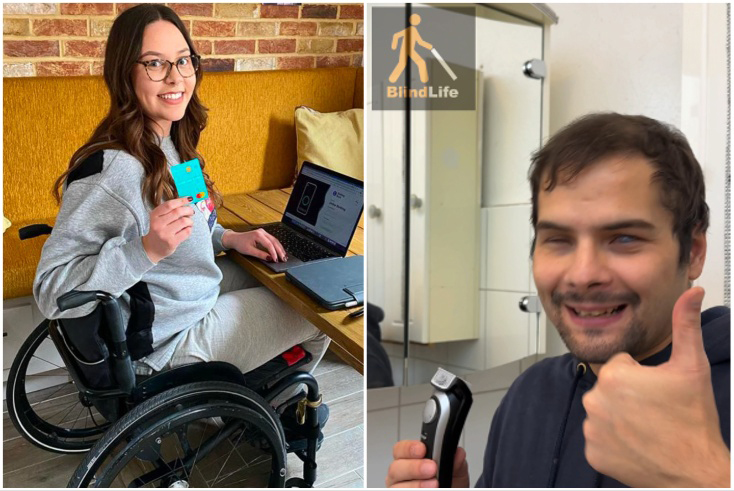Inclusion without exaggeration: How to make disabled people part of the conversation

Opinion
Disability is still missing in many inclusivity drives. But there are many ways brands can target disabled people, with influencers playing a key role.
The UK is a melting pot of cultures and ideas. And businesses are evolving to reflect this diversity; organisations and industries of all shapes and sizes are investing more in inclusion. LGBTQIA+ representation is often a core focus, with many brands reforming to better represent these individuals and capture a larger share of the valuable “pink pound”. Companies are also actively promoting racial and gender equality.
But the biggest minority group is still excluded from the drive for inclusion: the disabled community.
There are over 16m disabled people in the UK. And about 5m who are in work.
This is a hugely significant demographic — but one that is often overlooked. This is a community that wields a collective spending power of £274bn annually — we call this the “purple pound”. And there is an immense opportunity for businesses to engage with this relatively untapped market.
Tackling tokenism
Audiences (especially younger demographics) want to see content created for them by people like them. And this is just as true for disabled audiences.
Disabled content creators forge powerful bonds with their audiences through sharing their unique lived experiences. Brands and agencies should invest in finding the right content creators who allow them to authentically tap into a loyal, engaged audience and foster brand trust.
Partnering with these influencers allows brands to move beyond tokenistic gestures. Collaborations can challenge narrow perceptions of disability, promoting a more diverse and realistic portrayal within marketing campaigns.
And these creators can help guide brands through the complexities of disability representation, ensuring campaigns avoid stereotypes and embrace genuine inclusivity.
Take, for instance, Braun’s “#StyledByMe” influencer campaign, which sought to highlight the accessibility of its product for those who are visually impaired.
But key to this idea was understanding the relationship between personal grooming and the visually impaired community. This was a campaign that Purple Goat was instrumental in the creation and execution of.
Creating with nuance
Balance is needed when identifying the right content creators to partner with.
Some creators don’t have disability as their main content niche. And some see themselves as more of an “advocate”. It’s important to understand the personal goals of a creator.
Depending on the brand or campaign goals, you can choose different creators and have a more incidental representation, such as Starling Bank’s most recent social campaign to drive more users to its mobile app. It featured diverse content creators including those with disabilities, but the campaign itself wasn’t specifically about inclusion — it was inclusion without exaggeration.
But how do you know when you are getting the balance right?
Well, nobody understands their audience better than the creator.
When partnering with disabled content creators, brands need to measure success holistically. Look beyond basic metrics like follower counts. Instead, zoom in on engagement. Do brand sentiment analysis within the disabled community. Assess how partnerships are influencing website traffic. Balance is everything.
Inclusivity for all…
We are working to create an industry where inclusivity is the norm.
Identity is a starting point. Some disabled people will want, to some extent, to be targeted based on identity. For example, delivering products and services that are directly relevant to their lives, such as a wheelchair brand or accessories. However, the very same consumer will also want to be targeted as a general consumer, alongside those who don’t share that same identity. They may be disabled, but they’re also mothers, pet owners, football fans… you get the picture.
But the end goal is to reach a point where purple pounds and pink pounds sit alongside all the other pounds in the same purse. Then we will know that we are truly inclusive with our products, services and marketing.
…But we are still on that journey
As in the real world, there’s no one-size-fits-all approach to inclusivity in influencer marketing.
And having the intention to be more inclusive is far better than not doing anything at all. Perhaps it’s my entrepreneurial instinct to say that, but failure is not a dirty word.
There are always risks associated with campaigns. And with diversity and inclusion, there are higher emotions involved. But this can be mitigated by collaborating with the right partners who can provide not just the expertise but the life experience necessary to make sure these campaigns reach their full potential.
Inclusion is soaring up the agenda for consumers and businesses alike. The business case is easy to argue — and so is the human side. These audiences make up a huge chunk of the population. We’ve come a long way in terms of representation. But disabled people deserve to be a part of the conversation. Inclusivity needs to be truly inclusive.
 Martyn Sibley is co-founder and CEO of Purple Goat
Martyn Sibley is co-founder and CEO of Purple Goat




